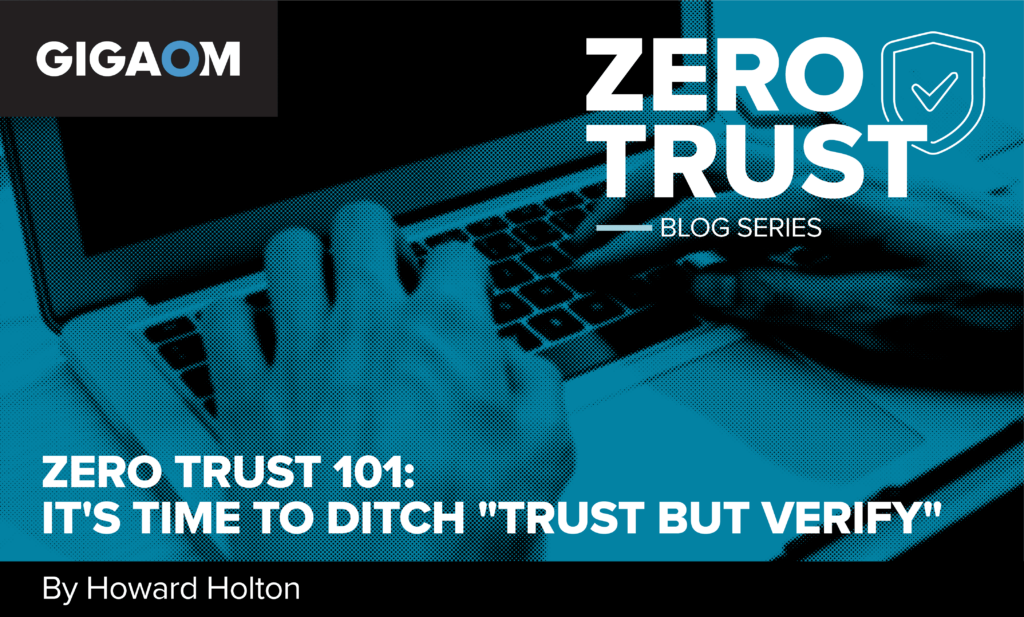Welcome to our new blog series on zero trust! If you’re an IT executive trying to navigate the complex world of cybersecurity, you’re in the right place. Over the next few posts, we’re going to demystify this buzzworthy concept and show you how to make it work for your organization. No jargon, no fluff, just practical insights you can use to enhance your security posture and protect your business.
In this first post, we’ll explore why the traditional “trust but verify” approach to security is no longer enough and why zero trust is the way forward. We’ll also give you some action items to get started on your zero trust journey. But first, let’s talk about the elephant in the room: what exactly is zero trust, and why should you care?
The Problem with “Trust but Verify”
For years, the “trust but verify” model was the gold standard in cybersecurity. The idea was simple: once a user or device was authenticated and allowed into the network, they were trusted to access resources and data. This approach worked well enough when most employees worked in the office and used company-issued devices.
Times have changed, however, and the limitations of “trust but verify” have become increasingly apparent:
- It doesn’t effectively limit the blast radius of a breach. If an attacker compromises a trusted user or device, they can move laterally within the network, accessing sensitive data and systems. The damage can be extensive and costly.
- It’s too focused on access control alone. It doesn’t adequately address other critical areas like device security, network segmentation, and data protection. In today’s complex, distributed IT environments, this narrow focus leaves organizations vulnerable.
The bottom line is that “trust but verify” is no longer sufficient to protect against modern cyber threats. We need a more comprehensive, adaptable approach to security – and that’s where zero trust comes in.
Zero Trust: A Philosophy, Not a Product
Zero trust is a security model that assumes no user, device, or network should be trusted by default, regardless of whether they’re inside or outside the organization’s perimeter. It’s a philosophy that emphasizes continuous verification, least privilege access, and granular control over resources and data.
Now, you might be thinking, “Great, another cybersecurity buzzword to add to the pile.” And it’s true that the term “zero trust” has been co-opted by many vendors to align with their product offerings. But don’t be fooled: zero trust is not a product you can buy off the shelf. It’s a mindset, a set of principles that guide your approach to security:
- Never trust, always verify
- Assume breach
- Verify explicitly
- Use least privilege access
- Monitor and audit continuously
By adopting these principles, organizations can create a more robust, resilient security posture that addresses the limitations of “trust but verify” and reduces the blast radius of potential breaches.
Why You Need Zero Trust
Embracing zero trust is not just about staying on top of the latest cybersecurity trends. It is a business decision that can deliver real, tangible benefits:
- Reduced risk: By not trusting anyone or anything by default and continuously verifying access, you can significantly reduce your attack surface and limit the potential damage of a breach. This is crucial in an era where the average cost of a data breach is $4.35 million (IBM Security, 2022).
- Improved visibility and control: Zero trust gives you granular control over who can access what and helps you spot potential threats more quickly. With better visibility into your environment, you can respond to incidents faster and more effectively.
- Enabling digital transformation: As you adopt cloud services, implement IoT devices, and enable remote work, zero trust provides a framework for securing these new environments and use cases. It allows you to embrace innovation without compromising security.
- Competitive advantage: By demonstrating a strong commitment to security, you can build trust with customers, partners, and regulators. In a world where data breaches make headlines almost daily, being able to showcase your robust security posture can set you apart from the competition.
Getting Started with Zero Trust
Implementing zero trust is not a one-and-done project. It’s a journey that requires a shift in mindset and a willingness to rethink traditional approaches to security. But just because it’s not easy doesn’t mean there’s nothing you can do to get started. Here are some action items you can tackle right away:
- Educate yourself and your team: Share this blog post with your colleagues and start a conversation about zero trust. The more everyone understands the concept, the easier it will be to implement.
- Assess your current security posture: Take a hard look at your existing security controls and identify gaps or weaknesses that a zero trust approach could address. This will help you prioritize your efforts and build a roadmap for implementation.
- Start small: Identify a specific use case or area of your environment where you can pilot zero trust principles, such as a particular application or user group. Starting small allows you to test and refine your approach before scaling up.
- Engage stakeholders: Zero trust is not just an IT initiative. It requires buy-in and participation from business leaders, end-users, and other stakeholders. Start talking to these groups about the benefits of zero trust and how it will impact them. Getting everyone on board early will make the transition smoother.
Wrapping Up
Adopting zero trust is a significant undertaking, but it’s one that’s well worth the effort. By embracing a philosophy of “never trust, always verify,” you can reduce your risk, improve your visibility and control, enable digital transformation, and gain a competitive edge in the market.
Over the course of this blog series, we’ll dive deeper into the key components of a zero trust architecture, explore best practices for implementation, and show you how to measure the success of your zero trust initiatives. We’ll also dispel common myths and misconceptions about zero trust and provide practical guidance for overcoming challenges along the way.
So, whether you’re just starting to explore zero trust or you’re well on your way to implementation, this series is for you. Stay tuned for our next post, where we’ll take a closer look at the building blocks of a zero trust architecture and how they work together to protect your assets and data.
In the meantime, start exploring zero trust and thinking about how it can benefit your organization. The future of security is here, and it’s time to embrace it.
Additional Resources:

